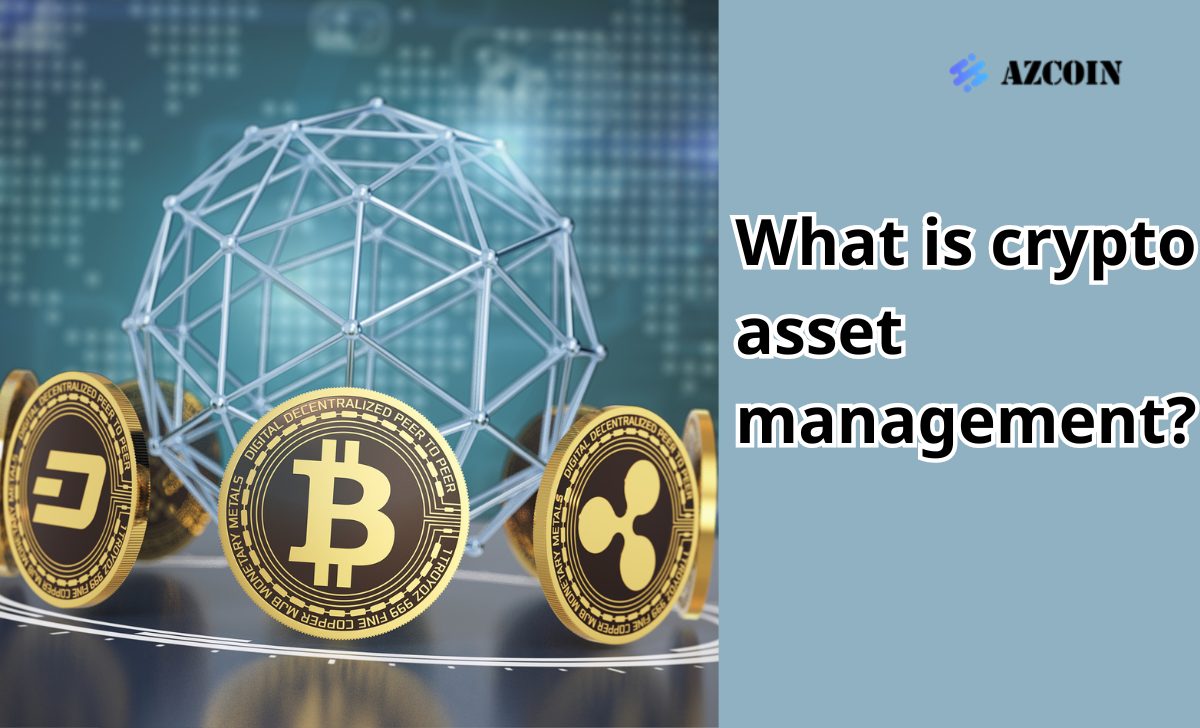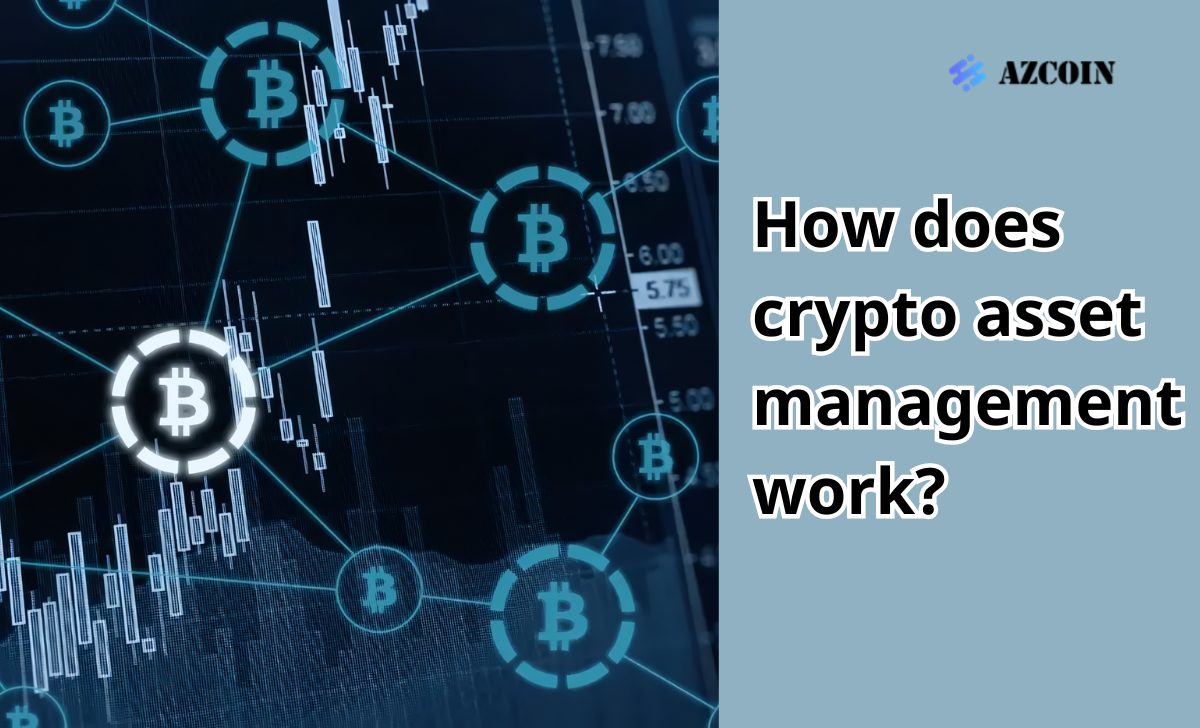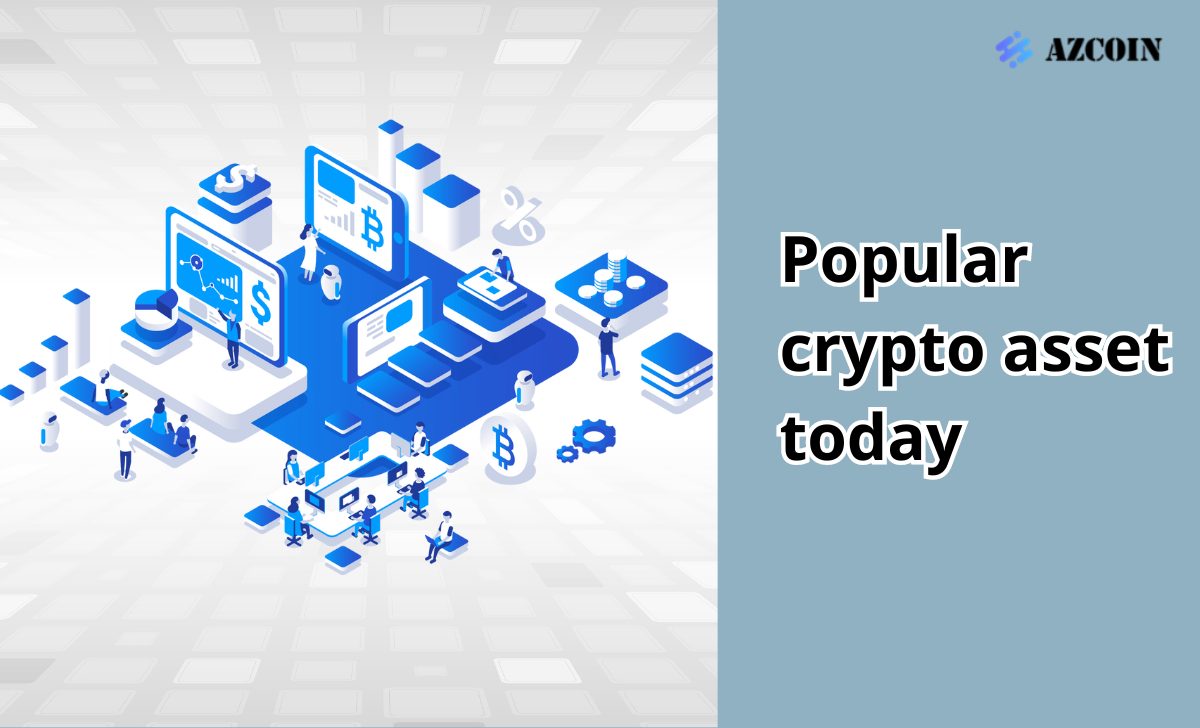Crypto asset management is becoming an important concept in the modern financial landscape. With the rapid development of blockchain technology and the rise in popularity of cryptocurrencies, the management and protection of digital assets has become an essential need for many investors.
In this article, AZCoin will join you to learn in detail about the concept of crypto asset management and the benefits it brings.
What is crypto asset management?

Crypto asset management is the process of monitoring, operating, and optimizing a portfolio of digital assets such as Bitcoin, Ethereum, and other cryptocurrencies. The process involves buying, selling, and trading cryptocurrencies in order to achieve investors specific financial goals.
In addition, crypto asset management also involves assessing and mitigating risks, monitoring market movements, and applying appropriate investment strategies to maximize returns.
Asset managers can use advanced technology tools and platforms to support the analysis of data, planning, and execution of investment decisions in an efficient manner.
How does crypto asset management work?

Crypto asset management involves monitoring and operating a portfolio in the cryptocurrency sector, which includes activities such as buying, selling, holding and trading different types of digital assets.
The methods of managing cryptocurrency assets can vary depending on the goals and strategies of the investor or asset manager. Some common methods are:
- Passive Management : Focused on long-term development, this method involves buying and holding a diversified cryptocurrency portfolio. The portfolio is regularly balanced to maintain the expected asset allocation.
- Active Management : This approach requires frequent portfolio and trading adjustments based on the manager’s analysis and forecasts. Despite the higher risk involved, active management can yield superior returns.
- Index tracking : This method is similar to passive management but focuses on purchasing a cryptocurrency portfolio that reflects a specific index, like the Bitwise 10 Cryptocurrency Index.
- quantitative analysis : Using algorithms and data analysis to identify patterns and trends in the cryptocurrency market, in order to optimize investment decisions.
Benefits of crypto asset management

crypto asset management offers many important benefits to investors, including:
- Optimize returns : By adopting the right investment strategies and regular monitoring, crypto asset management helps optimize returns on investments.
- Reduce risk : Crypto asset management helps to disperse risk by creating a diversified portfolio, while also using analytical tools to predict and mitigate potential risks.
- Flexible monitoring and adjustments : The manager can continuously monitor the market situation and adjust the portfolio to react quickly to fluctuations and new opportunities.
- Effective management : Using technology and analytical tools to help manage assets effectively, saving time and effort in making investment decisions.
- Asset Security : crypto asset management often comes with high-level security measures to protect assets from cyber threats and fraud.
- Regulatory Compliance : Cryptocurrency asset managers often ensure that transactions and investment activities comply with applicable regulations and laws, helping risk management legal risk management.
- In-depth analysis : The application of technical and fundamental analysis methods helps identify investment trends and opportunities, providing insights to make smarter decisions.
Popular crypto asset today

In the world of cryptocurrencies, there are many different types of assets that you can invest in. Each asset class has its own characteristics and benefits.
Bitcoin
Bitcoin is the first and most popular cryptocurrency, which is considered “digital gold.” It works on a blockchain platform and is designed to act as a decentralized currency. To invest effectively, you should trade them on the best crypto exchanges 2024.
Altcoins
Altcoins are cryptocurrencies other than Bitcoin, including thousands of different ones such as Ethereum, Ripple (XRP), and Litecoin. They often have different features and purposes, from smart contract platforms smart contract to payment solutions.
Stablecoins
Stablecoins are cryptocurrencies designed to maintain a stable value by pegging at a traditional asset such as the US dollar or gold. Examples include Tether (USDT) and USD Coin (USDC), which are used to minimize market volatility.
Security Tokens
Security tokens represent financial assets such as shares, bonds or ownership rights in a business. They are issued and traded as digital securities and are often subject to regulatory compliance.
Utility Tokens
Utility tokens provide access to services or products within a particular blockchain platform. They are often used to paying for service fees or participating in special ecosystem functions.
Non-Fungal Token (NFT)
NFT blockchains are unique digital assets, often used to represent digital assets such as artwork, videos, or collectibles. They use blockchain technology to certify ownership and exclusivity.
Security Money
Security Coins are cryptocurrencies that are backed by physical or financial assets, and can be used as a form of security investment. They are often subject to financial and securities regulations.
Conclusion
Through this article, AZcoin introduced you to the importance of managing cryptocurrency assets. Adopting effective management methods will help you protect your assets and achieve your financial goals. Keep following us for the latest information on the cryptocurrency market and investment trends

I am Louis Dang, living in Ottawa, Canada. I am currently working as a trader for AZCoin company, with 7 years of experience in the cryptocurrency market, I hope to bring you useful information and knowledge about virtual currency investment.











